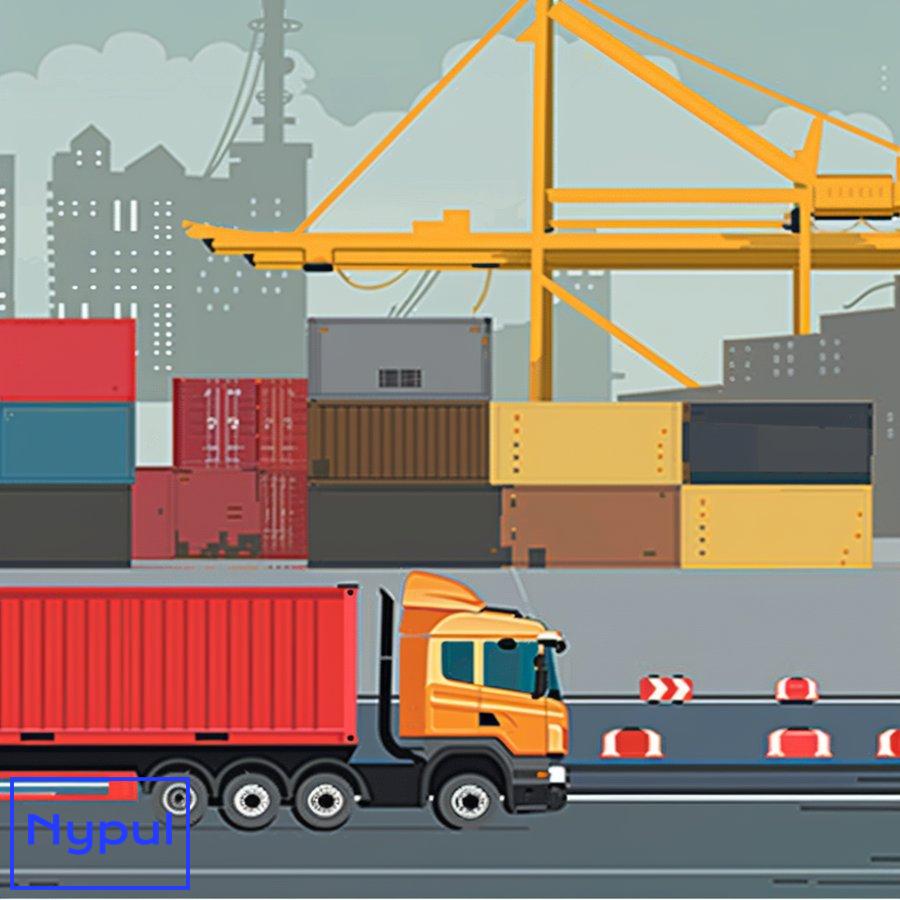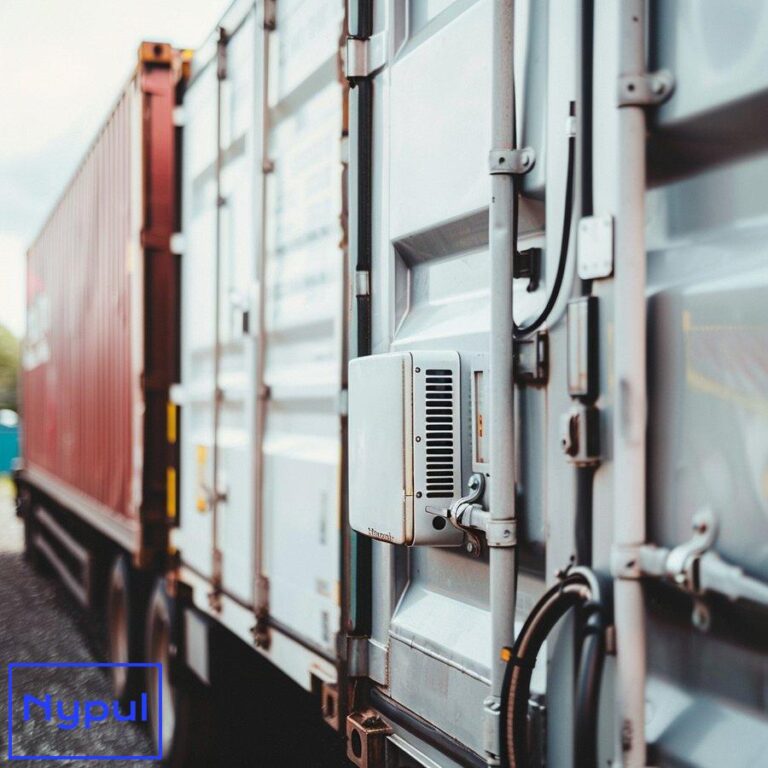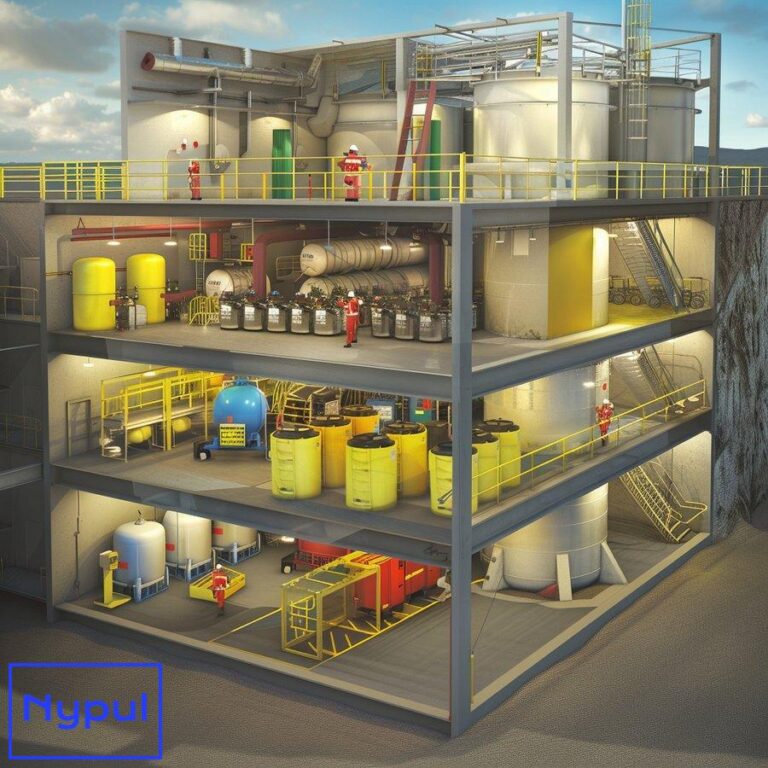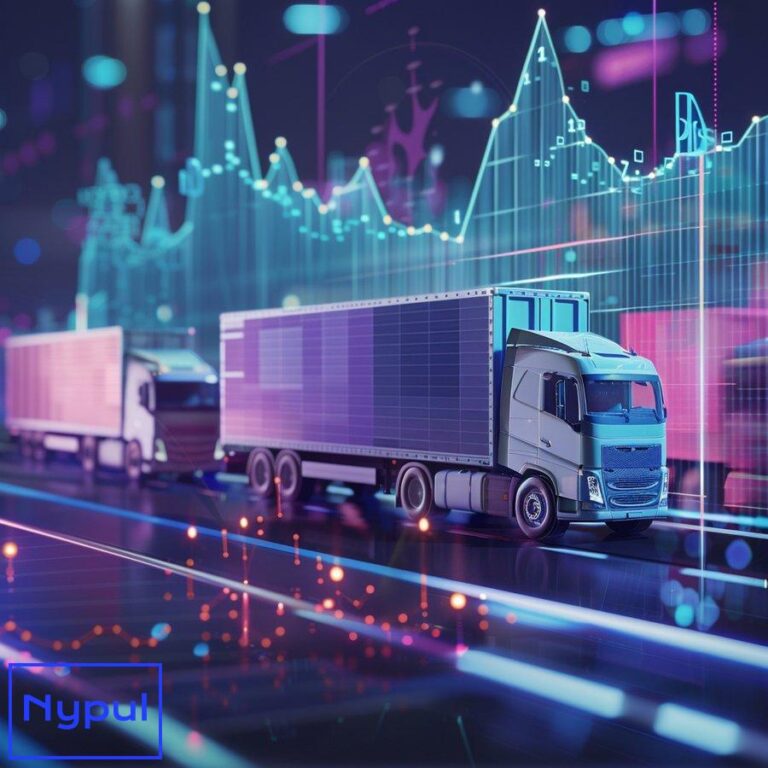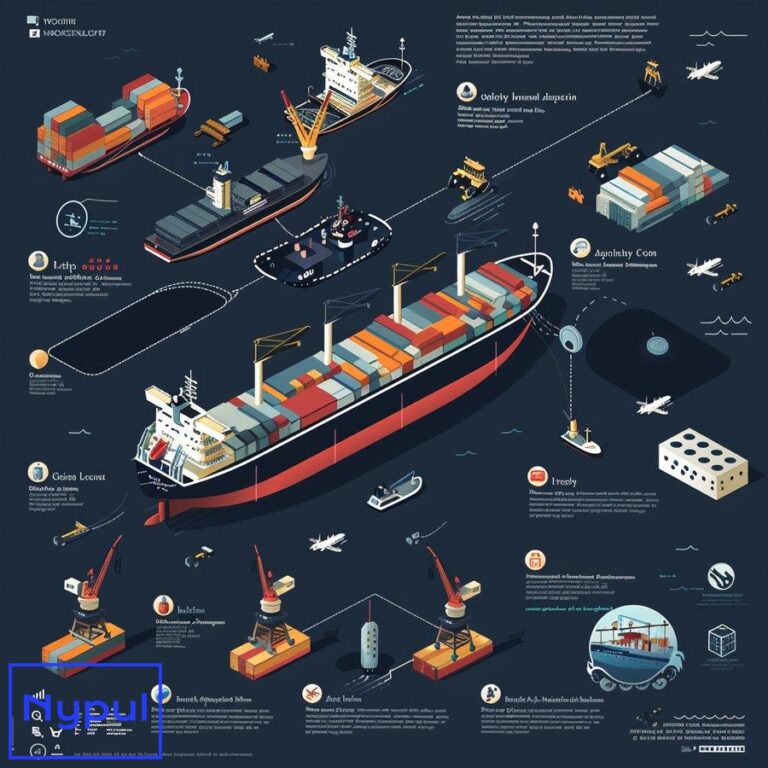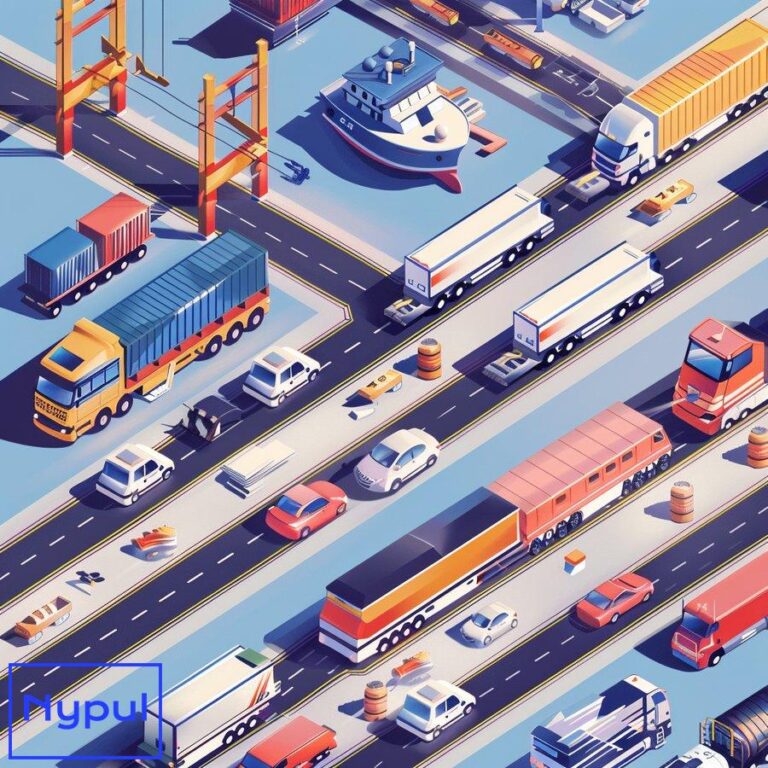What Are Drayage Fees
What are drayage fees and why are they important?
Drayage fees represent the costs associated with short-distance transportation of shipping containers and goods, typically from a port or rail yard to a nearby warehouse or distribution center. These fees cover the crucial “first mile” or “last mile” of intermodal freight transport.

Understanding drayage fees is essential for businesses involved in international trade and domestic logistics. These charges can significantly impact overall shipping costs and supply chain efficiency. Proper management of drayage fees allows companies to:
Optimize budgets: Accurate forecasting of drayage expenses enables better financial planning and cost control.
Improve supply chain visibility: Detailed knowledge of drayage components provides greater insight into logistics operations.
Enhance customer service: Efficient drayage processes lead to faster deliveries and improved customer satisfaction.
Reduce delays: Proactive management of drayage fees helps avoid costly bottlenecks and demurrage charges.
Drayage fees typically encompass several components:
Base rate: The core charge for transporting a container from point A to point B.
Fuel surcharge: An additional fee to account for fluctuating fuel prices.
Chassis rental: Charges for the wheeled frame used to transport containers.
Accessorial charges: Extra fees for services beyond basic transportation, such as detention or special handling.
The importance of drayage fees extends beyond individual shipments. They play a crucial role in:
Port congestion management: Efficient drayage operations help reduce bottlenecks at busy ports.
Environmental impact: Optimized drayage routes and processes can lower emissions and fuel consumption.
Economic growth: Smooth drayage operations facilitate trade and support local and national economies.
For businesses engaged in international trade or domestic logistics, a thorough understanding of drayage fees is not just a matter of cost management—it’s a strategic necessity. By grasping the intricacies of these charges, companies can make informed decisions that ripple through their entire supply chain, ultimately impacting their bottom line and competitive position in the market.
How are drayage fees calculated?
Drayage fee calculation involves several factors and can vary depending on the specific circumstances of each shipment. Understanding the components that go into these calculations helps shippers anticipate costs and make informed decisions.
Base rate determination

The foundation of drayage fees is the base rate, which typically accounts for:
Distance: The mileage between pickup and delivery points.
Time: Estimated duration of the transport, including potential traffic or port congestion.
Container size: Standard 20-foot or 40-foot containers may have different rates.
Weight: Heavier loads often incur higher fees due to increased fuel consumption and equipment wear.
Drayage providers usually offer a flat rate for standard moves within a specific zone or distance range. This rate may be calculated per container or per hundredweight (CWT) for less-than-container load (LCL) shipments.
Fuel surcharge
Fuel surcharges fluctuate based on current diesel prices. They are typically calculated as a percentage of the base rate or as a fixed amount per mile. The formula for fuel surcharges often looks like this:
Fuel Surcharge = (Current Fuel Price – Base Fuel Price) x (Total Miles / Average MPG) x (Surcharge Percentage)
Chassis rental fees
Chassis rental is usually charged on a per-day basis. The fee structure may include:
Daily rate: A fixed charge for each day the chassis is in use.
Trip rate: A flat fee for the entire drayage move, regardless of duration.
Accessorial charges
These additional fees vary widely and are applied based on specific circumstances or services required. Common accessorial charges include:
Detention: Charged when loading or unloading exceeds the allotted free time.
Per diem: Fees for extended use of container or chassis beyond free time.
Overweight: Surcharges for containers exceeding weight limits.
Special handling: Extra fees for hazardous materials or oversized cargo.
Sample drayage fee calculation
Here’s an example of how a typical drayage fee might be calculated:
| Component | Calculation | Amount |
|---|---|---|
| Base rate | Flat rate for 40-foot container within 50-mile zone | $350 |
| Fuel surcharge | 15% of base rate | $52.50 |
| Chassis rental | $25/day for 2 days | $50 |
| Detention | 2 hours beyond free time at $75/hour | $150 |
| Total drayage fee | Sum of all components | $602.50 |
This example illustrates how various factors combine to form the total drayage fee. Actual calculations may be more complex, involving additional variables or different pricing structures depending on the drayage provider and specific shipment requirements.
Factors affecting calculation accuracy
Several elements can impact the precision of drayage fee calculations:
Market conditions: Supply and demand fluctuations can influence rates.
Seasonal variations: Peak shipping seasons may lead to higher fees.
Port congestion: Delays at ports can result in additional charges.
Regulatory changes: New laws or tariffs can affect pricing structures.
Accurate drayage fee calculation requires up-to-date information and a clear understanding of all potential charges. Shippers should work closely with their drayage providers to ensure transparency in pricing and to identify opportunities for cost optimization. Regular review of drayage expenses and fee structures can help businesses maintain competitive shipping costs while ensuring efficient supply chain operations.
What factors influence drayage fee pricing?
Drayage fee pricing is influenced by a complex interplay of various factors. Understanding these elements helps shippers anticipate costs and make informed decisions about their logistics strategies.
Geographic location
The specific port or rail yard where drayage operations occur significantly impacts pricing:
Port efficiency: Ports with advanced infrastructure and streamlined processes often have lower drayage fees.
Urban vs. rural destinations: Urban areas typically incur higher fees due to traffic congestion and complex routing.
Regional economic factors: Labor costs and local regulations vary by region, affecting overall pricing.
Distance and routing
While drayage typically involves short-distance transport, the exact route can influence fees:
Mileage: Longer distances naturally result in higher base rates.
Traffic patterns: Areas prone to heavy congestion may incur additional time-based charges.
Road quality: Routes with poor infrastructure may require specialized equipment or result in slower transit times.
Cargo characteristics
The nature of the goods being transported plays a crucial role in pricing:
Weight: Heavier loads increase fuel consumption and may require special handling.
Dimensions: Oversized or odd-shaped cargo often incurs surcharges.
Hazardous materials: Special certifications and handling procedures for hazardous goods lead to higher fees.
Perishables: Temperature-controlled containers or expedited services for perishables add to costs.
Equipment requirements
The specific equipment needed for a drayage move affects pricing:
Container size: Standard 20-foot and 40-foot containers have different base rates.
Specialized chassis: Flatbeds, lowboys, or other specialized equipment command premium rates.
Refrigerated containers: Reefer units require additional power and monitoring, increasing costs.
Market conditions
Supply and demand dynamics in the drayage market influence pricing:
Peak seasons: High-volume periods like holiday shipping seasons often see rate increases.
Capacity constraints: Shortages of drivers or equipment can drive up prices.
Fuel prices: Fluctuations in diesel costs directly impact fuel surcharges.
Regulatory environment
Government policies and industry regulations play a significant role in drayage pricing:
Emissions standards: Stricter environmental regulations may require investment in cleaner vehicles, affecting rates.
Hours of service rules: Limitations on driver work hours can impact scheduling and capacity.
Port and terminal regulations: Specific rules at ports or rail yards may affect operational efficiency and costs.
Contractual arrangements
The nature of the business relationship between shippers and drayage providers influences pricing:
Volume commitments: Guaranteed shipment volumes often lead to more favorable rates.
Long-term contracts: Extended agreements may offer stability in pricing but less flexibility.
Spot market rates: One-off shipments typically incur higher fees than contracted moves.
Operational efficiency
The efficiency of both the shipper and the drayage provider impacts overall costs:
Loading/unloading speed: Quick turnaround times reduce the risk of detention charges.
Documentation accuracy: Proper paperwork prevents delays and associated fees.
Technology adoption: Use of advanced tracking and routing systems can optimize operations and reduce costs.
Additional services
Value-added services requested by shippers can significantly affect drayage fees:
Customs clearance assistance: Help with documentation and inspections may incur extra charges.
Transloading: Transferring cargo between containers or modes of transport adds to the overall cost.
Storage: Temporary warehousing or container storage often comes with additional fees.
Understanding these factors allows shippers to better anticipate and manage their drayage expenses. By considering each element and how it applies to their specific shipping needs, businesses can work with drayage providers to develop cost-effective strategies that balance efficiency, reliability, and budget constraints.
What are the common types of accessorial charges in drayage?

Accessorial charges in drayage represent additional fees beyond the basic transportation cost. These charges account for extra services or circumstances that arise during the drayage process. Understanding these common accessorial charges helps shippers anticipate potential extra costs and plan accordingly.
Detention fees
Detention fees apply when a driver or equipment is held at a pickup or delivery location beyond the allotted free time:
Driver detention: Charged when loading or unloading exceeds the agreed-upon time frame, typically billed hourly.
Equipment detention: Fees for keeping containers or chassis beyond the free time, often charged per day.
Per diem charges
Per diem fees are daily charges for extended use of containers or equipment:
Container per diem: Applied when shippers keep containers beyond the allowed free time.
Chassis per diem: Charged for extended use of the wheeled frame used to transport containers.
Demurrage fees
Demurrage applies to containers that remain at the port or terminal beyond the allotted free time:
Import demurrage: Charged on incoming containers not picked up promptly.
Export demurrage: Applied to outgoing containers delivered to the port too early before vessel loading.
Chassis split fees
These fees occur when the container and chassis are not located at the same facility:
Bobtail charges: Fees for a tractor to travel without a trailer to pick up or drop off equipment.
Chassis repositioning: Costs associated with moving an empty chassis to the container location.
Overweight charges
Fees applied to containers exceeding weight limits:
Overweight permits: Costs for obtaining special permits for heavy loads.
Scale fees: Charges for weighing containers to ensure compliance with weight restrictions.
Special handling fees
These charges cover additional services required for specific types of cargo:
Hazardous materials handling: Extra fees for transporting dangerous goods.
Temperature-controlled cargo: Surcharges for refrigerated or heated container transport.
Oversized cargo handling: Fees for managing cargo that exceeds standard dimensions.
Pre-pull or yard storage fees
Charges related to early container retrieval or temporary storage:
Pre-pull fees: Costs for retrieving a container from the port before the actual delivery date.
Yard storage: Charges for temporarily storing containers at the drayage provider’s facility.
Fuel surcharges
While often considered part of the base rate, fuel surcharges can sometimes be listed as an accessorial:
Mileage-based surcharges: Fees calculated based on the distance traveled.
Percentage-based surcharges: Charges determined as a percentage of the base transportation rate.
Congestion fees
Surcharges applied during periods of high traffic or port congestion:
Peak season surcharges: Additional fees during busy shipping periods.
Traffic mitigation fees: Charges aimed at encouraging off-peak hour deliveries.
Administrative and documentation fees
Charges for paperwork and administrative tasks:
Customs documentation: Fees for preparing or processing customs-related paperwork.
EDI (Electronic Data Interchange) fees: Charges for electronic transmission of shipping information.
Appointment fees
Costs associated with scheduling pickup or delivery:
Missed appointment fees: Charges for failing to meet scheduled appointment times.
After-hours appointment fees: Surcharges for pickups or deliveries outside normal business hours.
Reconsignment or diversion fees
Charges for changing the delivery destination after the shipment is in transit:
Address correction fees: Costs for updating incorrect delivery information.
Rerouting charges: Fees for changing the delivery route or destination.
Understanding these common accessorial charges allows shippers to:
Budget accurately: Anticipate potential extra costs and plan finances accordingly.
Negotiate effectively: Discuss terms with drayage providers to minimize or cap certain accessorial charges.
Optimize operations: Implement processes to avoid triggering unnecessary accessorial fees.
Improve communication: Clearly convey shipment requirements to prevent misunderstandings that lead to extra charges.
By familiarizing themselves with these accessorial charges, shippers can make informed decisions about their drayage operations, potentially reducing overall costs and improving supply chain efficiency.
How do drayage fees impact overall supply chain costs?
Drayage fees, while representing a relatively short segment of the overall supply chain, can have a significant impact on total logistics costs. Understanding this impact is crucial for effective supply chain management and cost optimization.

Direct cost implications
Drayage fees directly affect the bottom line of shipping operations:
Percentage of total shipping costs: Drayage can account for 5% to 15% of total door-to-door container shipping costs, depending on the specific route and circumstances.
Variability in expenses: The unpredictable nature of some drayage fees, particularly accessorial charges, can lead to budget overruns.
Cumulative effect: For high-volume shippers, even small increases in drayage fees can result in substantial additional costs over time.
Inventory carrying costs
Drayage efficiency impacts inventory management:
Storage expenses: Delays in drayage can lead to increased warehouse storage costs or demurrage fees at ports.
Working capital tie-up: Slower drayage processes mean inventory spends more time in transit, tying up capital.
Safety stock requirements: Unreliable drayage may necessitate higher safety stock levels, increasing overall inventory costs.
Customer service and sales impact
Drayage performance affects customer satisfaction and sales:
Order fulfillment speed: Efficient drayage contributes to faster order processing and delivery times.
Reliability: Consistent drayage operations improve on-time delivery rates, enhancing customer trust.
Competitive advantage: Companies with optimized drayage processes can offer better service levels, potentially increasing market share.
Supply chain agility
Drayage fees influence a company’s ability to respond to market changes:
Flexibility costs: The ability to expedite shipments or change routes often comes with premium drayage fees.
Risk mitigation expenses: Building redundancy into drayage operations to handle disruptions can increase overall costs.
Scalability challenges: Rapidly scaling operations during peak periods may incur higher drayage fees due to capacity constraints.
Operational efficiency
Drayage processes affect overall supply chain efficiency:
Resource allocation: Time spent managing drayage operations diverts resources from other supply chain activities.
Process integration: Inefficient drayage can create bottlenecks that ripple through the entire supply chain.
Data management costs: Tracking and analyzing drayage performance requires investment in systems and personnel.
Compliance and regulatory costs
Drayage operations must adhere to various regulations:
Environmental compliance: Fees related to emissions standards and green initiatives in drayage can increase overall costs.
Security measures: Compliance with port and border security regulations may add to drayage expenses.
Documentation expenses: Costs associated with maintaining proper paperwork for customs and regulatory purposes.
Strategic decision-making
Drayage fees influence long-term supply chain strategies:
Network design: High drayage costs in certain areas may lead companies to reconsider their distribution network.
Modal choices: Excessive drayage fees might push companies to explore alternative transportation modes.
Supplier and partner selection: Drayage efficiency becomes a factor in choosing suppliers and logistics partners.
Technology investment
Managing drayage effectively often requires technological solutions:
Software costs: Investment in transportation management systems (TMS) to optimize drayage operations.
Integration expenses: Costs associated with connecting drayage systems with broader supply chain management platforms.
Training and implementation: Expenses related to adopting new technologies and training staff.
Financial planning and forecasting
Drayage fees impact financial strategies:
Budgeting complexity: The variable nature of drayage fees can complicate financial planning and forecasting.
Cash flow management: Unpredictable drayagecosts can affect cash flow projections and working capital requirements.
Risk assessment: Volatility in drayage fees may influence risk management strategies and hedging decisions.
To illustrate the impact of drayage fees on overall supply chain costs, consider the following example:
| Cost Component | Without Optimization | With Drayage Optimization |
|---|---|---|
| Drayage Fees | $1,000 | $800 |
| Inventory Carrying Costs | $500 | $400 |
| Warehousing Costs | $300 | $250 |
| Customer Service Costs | $200 | $150 |
| Technology Investment | $100 | $150 |
| Total Supply Chain Costs | $2,100 | $1,750 |
This example demonstrates how optimizing drayage operations can lead to a 16.7% reduction in overall supply chain costs, despite increased technology investment.
Understanding the far-reaching impact of drayage fees on supply chain costs allows companies to:
Prioritize improvements: Focus on areas where drayage optimization can yield the greatest overall cost savings.
Make informed trade-offs: Balance drayage expenses against other supply chain costs for optimal efficiency.
Develop holistic strategies: Create comprehensive approaches that consider drayage’s role in the broader supply chain context.
By recognizing the multifaceted influence of drayage fees, businesses can make strategic decisions that enhance overall supply chain performance and contribute to long-term profitability.
What strategies can reduce drayage fees?
Implementing effective strategies to reduce drayage fees can significantly impact a company’s bottom line and improve overall supply chain efficiency. Here are key approaches businesses can adopt to minimize drayage costs:
Optimize container utilization
Maximizing the use of container space helps reduce the number of trips required:
Proper loading techniques: Train staff in efficient loading methods to maximize container capacity.
Mixed-load optimization: Combine different product types strategically to fill containers more effectively.
Packaging redesign: Consider altering product packaging to improve stacking and space utilization.
Improve scheduling and planning
Efficient scheduling can prevent unnecessary fees and improve overall drayage operations:
Advance booking: Reserve drayage services early to secure better rates and avoid last-minute premium charges.
Appointment systems: Utilize port and terminal appointment systems to reduce wait times and potential detention fees.
Off-peak deliveries: Schedule pickups and deliveries during non-peak hours to avoid congestion and associated surcharges.
Leverage technology solutions
Adopting modern technology can streamline drayage processes and reduce costs:
Transportation Management Systems (TMS): Implement TMS software to optimize routes, track shipments, and manage documentation.
Real-time tracking: Use GPS and IoT devices to monitor container locations and anticipate potential delays.
Predictive analytics: Employ data analysis tools to forecast demand and optimize drayage scheduling.
Negotiate better contracts
Strategic negotiations with drayage providers can lead to more favorable terms:
Volume discounts: Commit to higher volumes in exchange for reduced rates.
Flexible terms: Negotiate contracts that allow for some flexibility during peak seasons or unexpected events.
Performance-based pricing: Establish agreements that reward providers for meeting or exceeding efficiency targets.
Consolidate shipments
Combining multiple shipments can lead to economies of scale:
Less-than-container load (LCL) consolidation: Group smaller shipments together to fill containers more efficiently.
Cross-docking: Utilize cross-docking facilities to consolidate goods from multiple sources into full truckloads.
Collaborative shipping: Partner with other businesses to share container space and split drayage costs.
Improve port and terminal relationships
Building strong relationships with port and terminal operators can lead to smoother operations:
Regular communication: Maintain open lines of communication to stay informed about potential issues or changes.
Compliance focus: Ensure all documentation and procedures strictly adhere to port regulations to avoid delays and fines.
Participation in port programs: Engage in port efficiency programs or green initiatives that may offer incentives or priority handling.
Optimize chassis management
Efficient chassis use can significantly reduce related fees:
Chassis pools: Participate in chassis pool arrangements to increase availability and reduce per diem charges.
Chassis ownership: Consider owning chassis for high-volume routes to eliminate rental fees.
Just-in-time chassis provision: Coordinate chassis delivery to coincide with container arrivals, minimizing idle time.
Implement flexible routing
Adapting to changing conditions can help avoid unnecessary costs:
Dynamic routing: Use real-time traffic and port congestion data to adjust routes on the fly.
Alternative port selection: Be prepared to reroute shipments to less congested ports when necessary.
Intermodal options: Consider rail or barge alternatives for certain routes to bypass road congestion.
Focus on driver efficiency
Maximizing driver productivity can reduce overall drayage costs:
Driver training: Invest in training programs to improve driving efficiency and reduce fuel consumption.
Optimized schedules: Plan driver routes and schedules to maximize the number of moves per shift.
Incentive programs: Implement performance-based incentives for drivers who consistently meet or exceed efficiency targets.
Streamline documentation processes
Efficient paperwork handling can prevent delays and associated fees:
Digital documentation: Adopt electronic systems for processing and sharing shipping documents.
Pre-clearance procedures: Utilize customs pre-clearance programs to expedite border crossings.
Standardized forms: Develop standardized templates for common documents to reduce errors and processing time.
Conduct regular audits and analyses
Continuous evaluation of drayage operations can identify cost-saving opportunities:
Performance metrics: Establish and monitor key performance indicators (KPIs) for drayage operations.
Cost breakdown analysis: Regularly review itemized drayage costs to identify areas for potential savings.
Benchmark comparisons: Compare your drayage costs and performance against industry standards to identify improvement areas.
By implementing these strategies, companies can significantly reduce their drayage fees. The key is to approach drayage optimization as an ongoing process, continuously seeking new ways to improve efficiency and reduce costs. This proactive approach not only lowers direct drayage expenses but also contributes to overall supply chain optimization, leading to improved competitiveness and profitability.
How do you choose the right drayage provider?
Selecting the right drayage provider is crucial for ensuring efficient, cost-effective, and reliable transportation of goods. The choice can significantly impact your overall supply chain performance. Here’s a comprehensive guide to help you make an informed decision:
Assess provider capabilities
Evaluate the drayage company’s ability to meet your specific needs:
Service area: Ensure the provider covers all required ports, rail yards, and delivery locations.
Equipment availability: Verify they have the right types and quantities of containers, chassis, and specialized equipment.
Volume capacity: Confirm the provider can handle your shipment volumes, especially during peak seasons.
Evaluate performance metrics
Request and analyze key performance indicators:
On-time delivery rate: Look for providers with consistently high on-time performance.
Damage-free delivery percentage: Assess their track record in handling cargo safely.
Average dwell time: Consider how efficiently they manage port and terminal operations.
Check licensing and compliance
Ensure the provider meets all legal and regulatory requirements:
FMCSA registration: Verify their registration with the Federal Motor Carrier Safety Administration.
Insurance coverage: Confirm they have adequate insurance to protect your cargo.
Customs compliance: Ensure they have experience with customs procedures and documentation.
Analyze pricing structure
Understand the provider’s fee structure and look for transparency:
Base rates: Compare base rates for standard moves.
Accessorial charges: Review their list of additional fees and how they compare to industry standards.
Pricing flexibility: Assess their willingness to offer volume discounts or negotiate rates.
Examine technological capabilities
Consider the provider’s use of technology to enhance operations:
Real-time tracking: Look for providers offering GPS tracking and real-time status updates.
EDI capabilities: Ensure they can integrate with your systems for seamless data exchange.
Online booking and documentation: Check if they offer user-friendly online platforms for managing shipments.
Assess customer service quality
Evaluate the level of support and communication offered:
Responsiveness: Test their response times to inquiries and issue resolution.
Dedicated support: Determine if they provide dedicated account managers for personalized service.
Communication channels: Check available methods for contacting customer support (phone, email, chat).
Review industry reputation
Research the provider’s standing in the industry:
Customer references: Request and contact references from current clients.
Online reviews: Check online platforms for feedback from other shippers.
Industry awards: Look for recognition or certifications within the logistics industry.
Evaluate financial stability
Assess the provider’s financial health to ensure long-term reliability:
Years in business: Consider their longevity in the drayage industry.
Financial reports: If available, review their financial statements or credit ratings.
Growth trajectory: Look for signs of steady growth and expansion.
Consider scalability
Ensure the provider can grow with your business:
Geographic expansion: Assess their plans for expanding service areas.
Capacity growth: Inquire about their strategies for increasing capacity to meet growing demand.
Technology investments: Look for ongoing investments in improving their technological capabilities.
Assess value-added services
Consider additional services that may enhance your supply chain:
Customs brokerage: Determine if they offer in-house customs clearance services.
Warehousing: Check if they provide short-term storage or cross-docking facilities.
Intermodal capabilities: Assess their ability to coordinate with other transportation modes.
Evaluate sustainability practices
Consider the provider’s commitment to environmental responsibility:
Green initiatives: Look for providers participating in environmental programs or using alternative fuels.
Emissions reporting: Check if they offer detailed emissions data for your shipments.
Compliance with regulations: Ensure they meet or exceed environmental regulations in their operating areas.
Analyze risk management procedures
Assess how the provider handles potential disruptions:
Contingency planning: Inquire about their strategies for managing port congestion or equipment shortages.
Security measures: Evaluate their procedures for ensuring cargo security.
Insurance options: Review the types of cargo insurance they offer or recommend.
To help you compare potential drayage providers, consider using a scoring matrix like the one below:
| Criteria | Weight | Provider A | Provider B | Provider C |
|---|---|---|---|---|
| Service Coverage | 15% | 8 | 9 | 7 |
| Performance Metrics | 20% | 9 | 7 | 8 |
| Pricing | 15% | 7 | 8 | 9 |
| Technology | 10% | 9 | 8 | 7 |
| Customer Service | 15% | 8 | 9 | 8 |
| Reputation | 10% | 9 | 8 | 7 |
| Financial Stability | 5% | 8 | 9 | 8 |
| Value-Added Services | 5% | 7 | 8 | 9 |
| Sustainability | 5% | 8 | 7 | 9 |
| Total Score | 100% | 8.3 | 8.15 | 7.9 |
In this example, Provider A scores highest overall, but the final decision should also consider specific needs and priorities of your business.
Choosing the right drayage provider requires careful consideration of multiple factors. By thoroughly evaluating potential partners across these key areas, you can select a provider that not only meets your current needs but also supports your long-term supply chain goals. Remember that the best provider for your business may not be the cheapest or the largest, but the one that offers the best combination of reliability, efficiency, and value for your specific requirements.
What role does technology play in modern drayage operations?
Technology has become an integral part of modern drayage operations, revolutionizing the way goods are transported over short distances. Its role extends far beyond simple tracking and has transformed every aspect of drayage management. Here’s an in-depth look at the critical roles technology plays in contemporary drayage:
Real-time visibility and tracking
Advanced tracking systems provide unprecedented visibility into drayage operations:
GPS tracking: Precise location data for containers and trucks in real-time.
IoT sensors: Monitoring of container conditions (temperature, humidity, shock) throughout the journey.
Mobile apps: Driver-friendly applications for status updates and communication.
Route optimization
Sophisticated algorithms help plan the most efficient routes:
Traffic prediction: Use of historical and real-time data to forecast and avoid congestion.
Dynamic rerouting: Instant adjustments to routes based on current road conditions.
Multi-stop optimization: Efficient planning for trucks handling multiple pickups or deliveries.
Automated scheduling and dispatching
AI-driven systems streamline the allocation of resources:
Predictive analytics: Forecasting demand to optimize fleet utilization.
Automated dispatching: Assigning drivers and equipment based on availability and efficiency.
Appointment scheduling: Coordinating pickup and delivery times to minimize wait times and detention fees.
Digital documentation and paperwork
Paperless systems reduce errors and speed up processes:
Electronic Bill of Lading (eBL): Digital creation and transmission of crucial shipping documents.
OCR technology: Automated reading and processing of paper documents.
Blockchain integration: Secure, transparent record-keeping for all parties involved in the drayage process.
Equipment management
Technology aids in the efficient use and maintenance of drayage equipment:
Predictive maintenance: IoT sensors on trucks and containers to anticipate and prevent breakdowns.
Chassis tracking: Real-time location and availability data for chassis pools.
Utilization analytics: Insights into equipment usage patterns to optimize fleet size and composition.
Integration with port and terminal systems
Seamless communication with port infrastructure improves efficiency:
Terminal Operating Systems (TOS) integration: Direct connection with port systems for smoother container handling.
Automated gate systems: Expedited check-in and check-out processes at ports and terminals.
Container availability alerts: Real-time notifications when containers are ready for pickup.
Customer interface and communication
Technology enhances the shipper’s experience and information flow:
Customer portals: Self-service platforms for booking, tracking, and managing shipments.
Automated notifications: Proactive alerts about shipment status, delays, or issues.
Chatbots and AI assistants: 24/7 customer support for routine inquiries and problem-solving.
Data analytics and business intelligence
Advanced analytics provide valuable insights for decision-making:
Performance dashboards: Real-time visualization of key performance indicators.
Predictive modeling: Forecasting future trends and potential issues in drayage operations.
Cost analysis tools: Detailed breakdown of expenses to identify areas for optimization.
Automated billing and invoicing
Technology streamlines financial processes in drayage:
Electronic invoicing: Automated generation and transmission of accurate invoices.
Rate management systems: Dynamic pricing based on real-time market conditions.
Audit tools: Automated checks for billing accuracy and contract compliance.
Environmental impact monitoring
Technology helps track and reduce the environmental footprint of drayage:
Emissions calculators: Tools to measure and report carbon emissions from drayage operations.
Fuel efficiency tracking: Monitoring and optimization of fuel consumption.
Green route planning: Incorporating environmental factors into route selection.
Security and compliance
Advanced systems ensure adherence to regulations and enhance security:
Electronic logging devices (ELDs): Automated tracking of driver hours for compliance with regulations.
Geofencing: Alerts when vehicles enter or exit designated areas.
Cybersecurity measures: Protection of sensitive data and systems from digital threats.
Artificial Intelligence and Machine Learning
AI and ML are pushing the boundaries of what’s possible in drayage:
Demand forecasting: Predicting future drayage needs based on historical data and market trends.
Anomaly detection: Identifying unusual patterns that may indicate inefficiencies or issues.
Natural Language Processing (NLP): Improving communication and data extraction from unstructured sources.
To illustrate the impact of technology on drayage operations, consider the following comparison:
| Aspect | Traditional Approach | Technology-Enabled Approach |
|---|---|---|
| Route Planning | Manual planning based on driver experience | AI-optimized routes considering real-time conditions |
| Documentation | Paper-based, prone to errors and delays | Digital, automated, with instant transmission |
| Visibility | Limited, often relying on phone calls | Real-time tracking and proactive notifications |
| Equipment Management | Reactive maintenance, manual tracking | Predictive maintenance, automated inventory |
| Customer Service | Business hours support, manual updates | 24/7 self-service portals, automated communications |
| Data Analysis | Monthly or quarterly reports | Real-time dashboards and predictive analytics |
The role of technology in modern drayage operations is transformative, touching every aspect of the process from planning toexecution and analysis. By leveraging these technological advancements, drayage providers can:
Increase operational efficiency: Streamline processes, reduce manual errors, and optimize resource utilization.
Enhance customer satisfaction: Provide real-time visibility, faster response times, and more accurate service.
Reduce costs: Minimize empty miles, decrease fuel consumption, and lower administrative overhead.
Improve compliance: Ensure adherence to regulations and maintain accurate records for auditing purposes.
Drive sustainability: Reduce environmental impact through optimized routing and better resource management.
Adapt to market changes: Quickly respond to fluctuations in demand or disruptions in the supply chain.
As technology continues to evolve, its role in drayage operations will only grow more significant. Forward-thinking companies that embrace these technological advancements will be better positioned to meet the increasing demands of modern supply chains, gain a competitive edge, and drive innovation in the industry.
The future of drayage technology looks promising, with emerging trends such as:
Autonomous vehicles: Self-driving trucks for short-haul drayage operations.
5G connectivity: Ultra-fast, low-latency communications for real-time decision-making.
Advanced robotics: Automated loading and unloading systems at ports and warehouses.
Augmented reality: AR-assisted navigation and maintenance for drivers and terminal operators.
Quantum computing: Solving complex optimization problems at unprecedented speeds.
To fully leverage technology in drayage operations, companies should:
Invest in training: Ensure staff are well-versed in using new technologies effectively.
Foster a culture of innovation: Encourage continuous improvement and adoption of new solutions.
Collaborate with tech partners: Work closely with technology providers to develop tailored solutions.
Prioritize data security: Implement robust cybersecurity measures to protect sensitive information.
Stay informed: Keep abreast of technological advancements and industry best practices.
By embracing technology, drayage operations can transform from a potential bottleneck in the supply chain to a streamlined, efficient process that adds value and enhances overall logistics performance. As the industry continues to evolve, those who leverage technology effectively will be best positioned to thrive in the competitive landscape of modern drayage.
